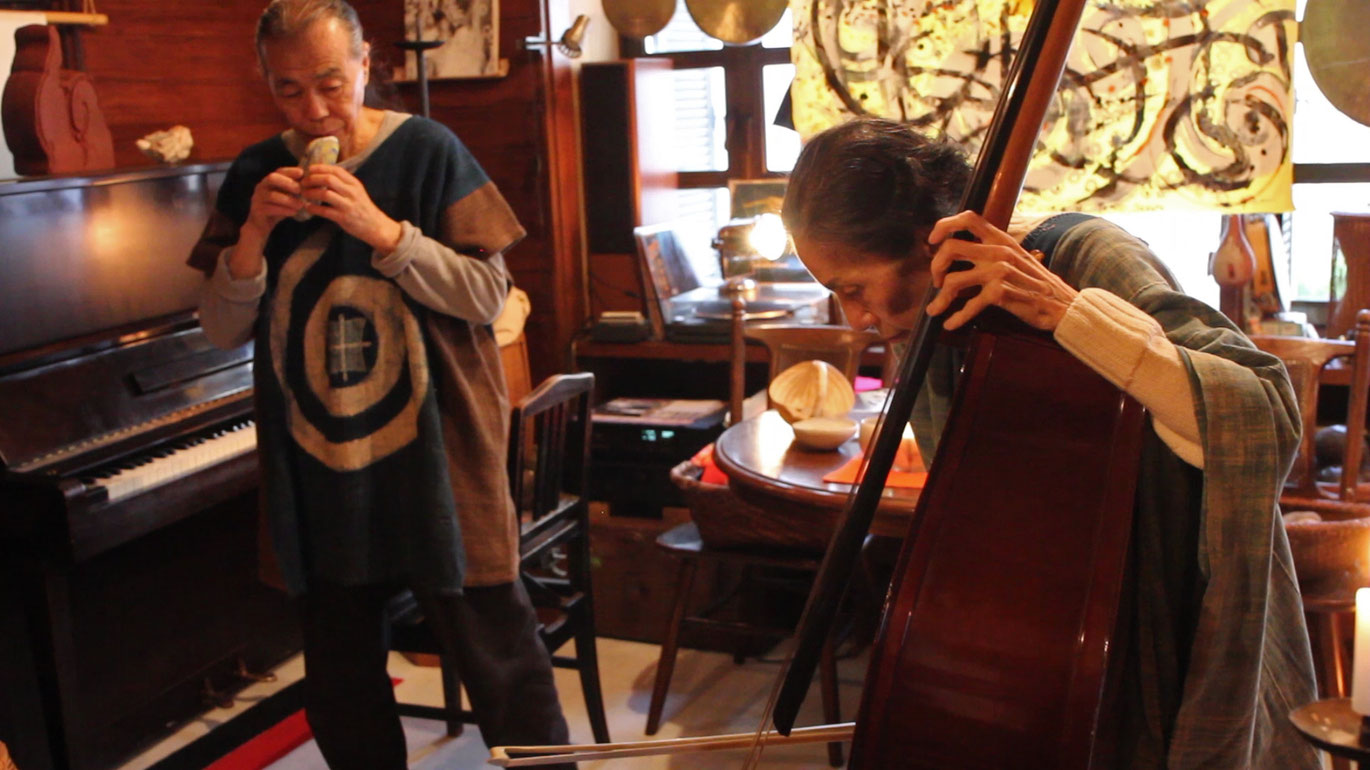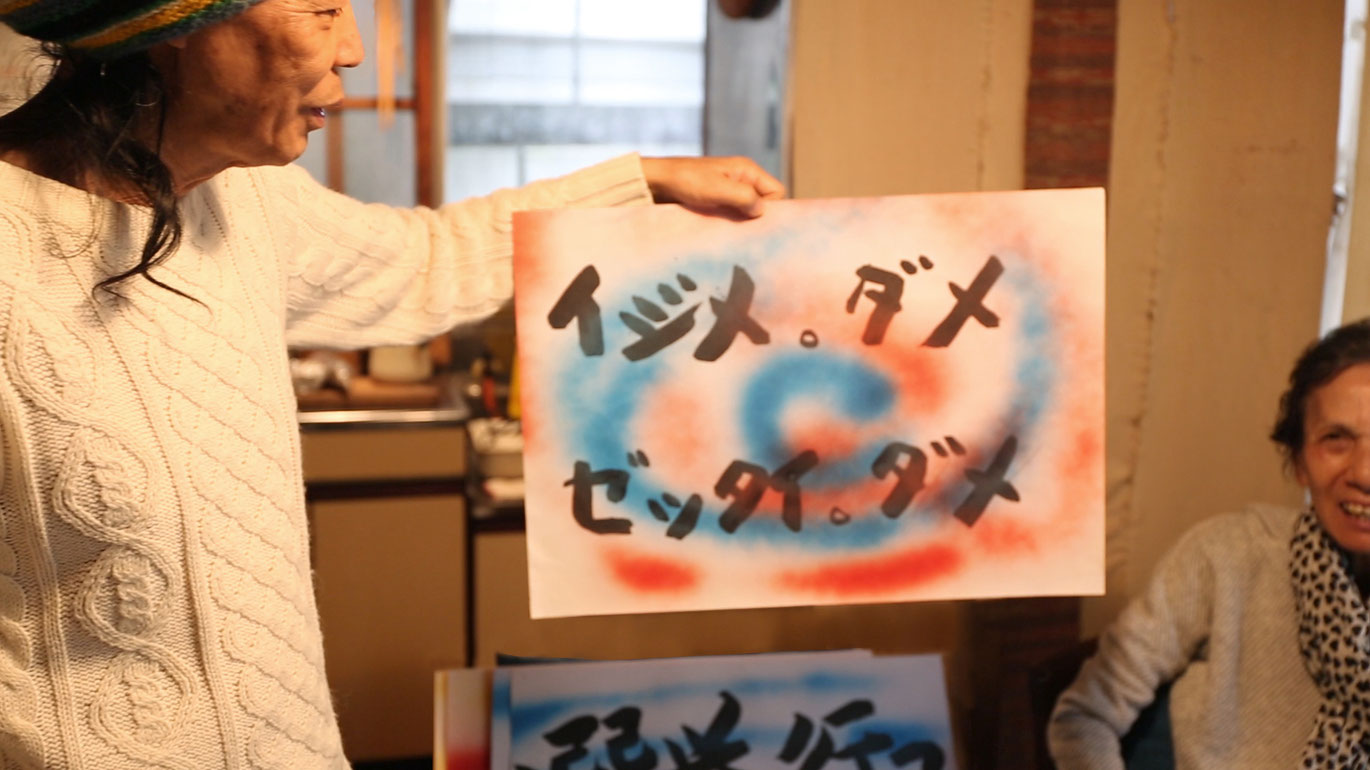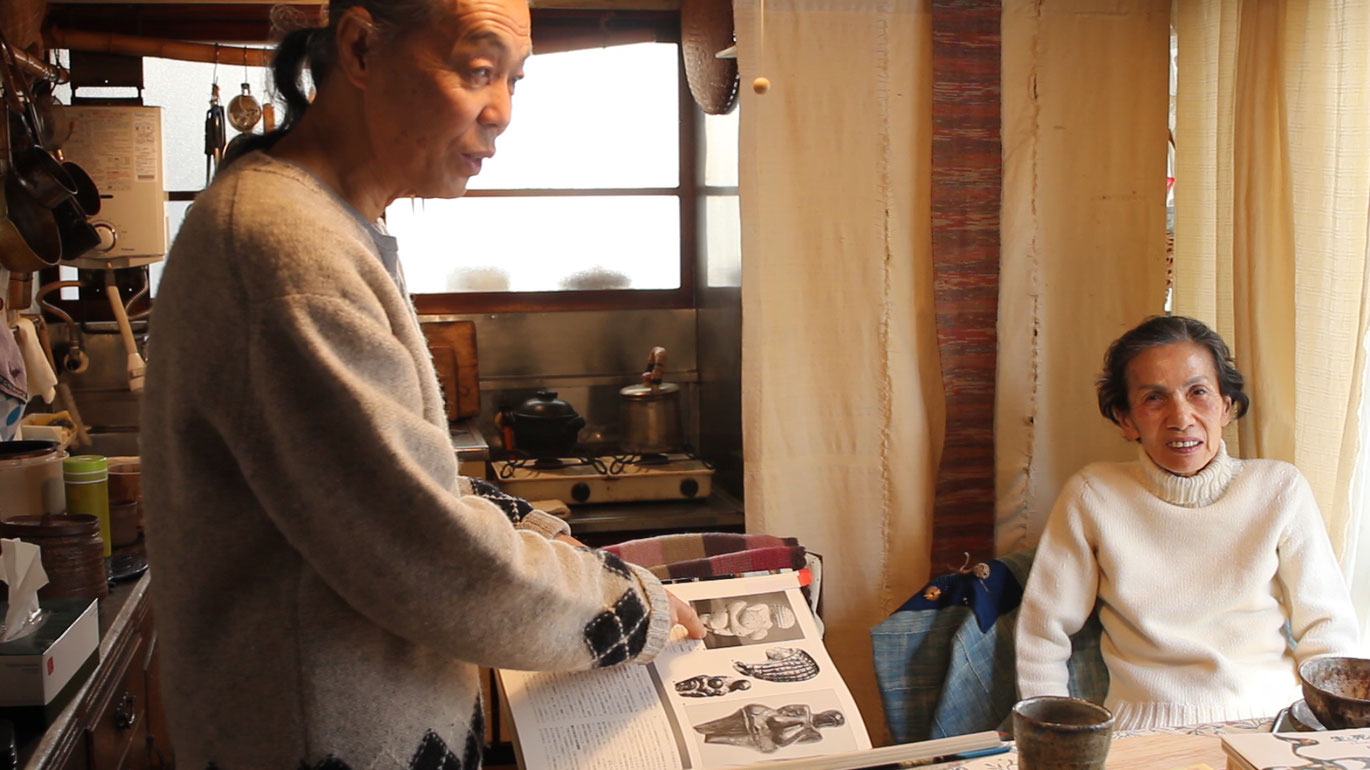the time is now. (I+II)
What is alternative living? The films, photos and sculptures of Heidrun Holzfeind are concerned with the interrelationship of life and art, a concern she demonstrates through carefully constellated scenes that integrate specific locations, tools and architecture. Both parts of the time is now. are dedicated to the Japanese improvisation/noise duo IRO. Toshio und Shizuko Orimo had started out performing wild art punk. But after the Chernobyl catastrophe of 1986, they began using acoustic instruments to make "energy-free" music which they call "Punk Kagura" – in reference to Kagura, a ritual dance tradition and music for the gods.
Holzfeind initially approaches the desired balance between animism and shamanism in a ritualistically animated, musically structured, architectural film segment, in part processed using color filters. It concentrates on a building complex by Takamasa Yosizaka – undertaken as a critique of civilization by the architect. Holzfeind combines the lush green of its surrounding environment as a contrast to the city of Tokyo. The second part of the first film fuses an improvised performance of piano, contrabass and recitative with documentary footage of street protests in opposition to US American military facilities, as well as IRO´s last exorcism-like punk concert in the aftermath of their musecological transformation in 1987. The cross-fading of audio layers overpowers apparent ruptures, enforcing a continuum of uncompromising expressivity.
the time is now. II portrays the couple in the process of unfolding their artistic/philosophical careers. The film foregrounds the intimacy and world view of the activist artists, including the questioning of their own gender roles. A life is seen that defies commercialism and with the aid of a few handyman tricks cheekily transforms their living space into the stage setting for a stylish traditional home. (Thomas Edlinger)
Translation: Eve Heller
the time is now. (I+II)
2019
Japan, Sweden, Austria
48 min



